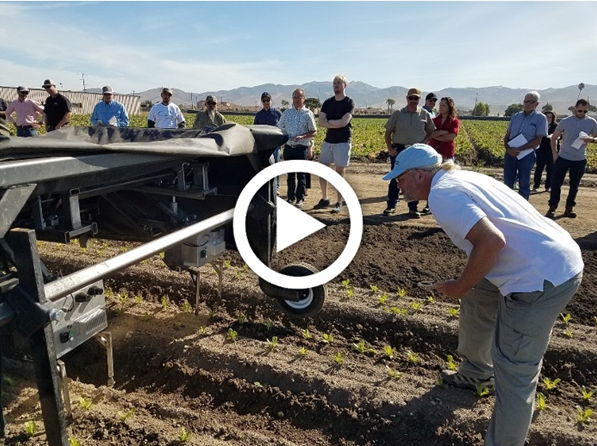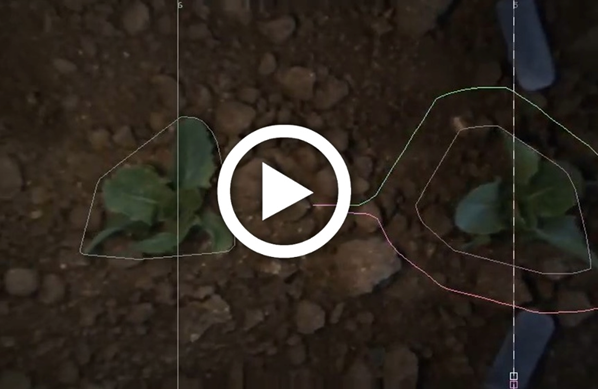
Rapidly changing conditions are a common feature in the agricultural arena. Things are in a constant state of flux in terms of climate, economics, methods of operation, etc. However, in the past few years, principally during the pandemic and post-pandemic times, changing conditions in agriculture for the desert Southwest have been extremely rapid and substantial.
Supply chain issues have been disruptive to many sectors of the economy and that has certainly affected agricultural operations. Things that have commonly been standard or easy things to manage in the past such as the simple need of replacing equipment or parts have become complicated and expensive.
We have become aware of fragile supply chains and the exposure of single points of failure that can have huge domino effects in many facets of our society, including agricultural industries. For example, during the pandemic it cost nearly $40,000 to move a shipping container from Asia to the U.S. and now things are starting to catch up and it has been reported that containers can now be shipped from Asia to the U.S. for less than $3,000.00.
Fertilizer prices for many materials have more than doubled in recent years, primarily due to basic supply and demand pressures. Fertilizer supplies have been subject basic economic pressures and further exacerbated by the war in Ukraine and the associated changes in natural gas supplies.
Fertilizer Supply and Cost
In a recent report from DTN market analysis (Formerly: Telvent DTN, Data Transmission Network) for the second week of November, retail U.S. fertilizer prices were not substantially different than in October but did have some slight variations with five fertilizers showing marginally lower prices than in October and three other key fertilizers tracking slightly higher. It is important to note that DTN designates a “significant” difference in prices with a move of 5% or more.
The five fertilizers that were marginally lower in price included monoammonium phosphate (MAP), potash, urea, 10-34-0, and anhydrous ammonia. Di-ammonium phosphate (DAP), urea ammonium nitrate (UAN)-28, and UAN-32 were slightly higher in price in mid-November, Table 1. Costs per pound of nitrogen (N) is shown for primary N sources in Table 2.
|
MAP |
Potash |
Urea |
10-34-0 |
Anhydrous |
DAP |
UAN-28 |
UAN-32 |
|
$978 |
$848 |
$812 |
$753 |
$1,415 |
$930 |
$584 |
$681 |
Table 1. Mid-November retail prices in U.S. markets for several fertilizers. Source: DTN
|
Anhydrous Ammonia |
UAN-28 |
UAN-32 |
|
$0.88 |
$1.04 |
$1.06 |
I am seeking samples of downy mildew on lettuce from around Yuma County to support the Michelmore Lab and their ongoing efforts to help characterize the downy mildew populations of the United States. The Michelmore Lab has led the charge on a survey of Bremia variants since 1980 and has been instrumental in demystifying the gene-for-gene nature of lettuce resistance to downy mildew.
Their group invites growers across the United States to submit downy mildew infected plant samples, which are then used to culture the Bremia on live host plants. The team then inoculates a panel of lettuce varieties carrying known resistance genes to determine the race of each isolate they receive. Identifying which races occur in which specific fields is essential to guiding the breeding of new resistant cultivars and maximizing the effectiveness of host-based genetic disease management. The data obtained from these tests are also used to designate new Bremia races through the International Bremia Evaluation Board.
Your contribution will help breed better lettuce for Yuma. This means less breakdown of resistance in the field, and better yields for Yuma growers. To facilitate these submissions the Yuma Plant Health Clinic will be setting up a separate drop-off point and submission sheet for downy mildew sample submissions in the same hallway we use for standard plant diagnostic submissions. The drop-off point will be clearly labelled and consist of a chest-style refrigerator and printed copies of the submission form. It is vital to keep these samples cool so they remain viable for future inoculations, so please place your samples inside of the refrigerator before you leave.
Shipping will be handled by the clinic. All we ask is that you fill out the submission form as completely as you can. An example of the questions that are asked in that form so you can prepare ahead of time can be found HERE .As mentioned in a previous article, last month at the UC Cooperative Extension Automated Technology Field Day in Salinas, CA, several automated technologies were showcased operating in the field for the first time to a general audience. One of the “new” machines designed specifically for in-row weeding in vegetable crops was discussed previously, a second is highlighted here.
Vision Robotics1 (https://www.visionrobotics.com/) demoed an innovative mechanical in-row weeding machine (Fig. 1). As with most other automated weeding machines currently on the market, in-row weeds are controlled with knife blades that cycle in and out of the crop row. Each knife blade however is controlled independently by an electric motor rather than in coupled pairs. Another feature is that the imaging system calculates a prescribed path for the blades to follow based on a contour of the crop plant and a user defined offset distance from the contour (Fig. 2) Because electric motors are used, blade position can be continuously and precisely controlled, thus facilitating close cultivation.
In the demo, the prototype seemed to work pretty well, but the run was short, and it was difficult to fully evaluate its performance. The video they shared of their imaging system with path planning and blade movement operating in real time impressed and showed good promise (Fig. 2). The innovation was recently patented, and the company is planning commercial units for interested customers.
Developments such as these are worth investigating as our and other researchers’ studies have shown that automated in-row weeding machines control about 50-66% of the in-row weeds, and the majority of uncontrolled weeds were observed to be close to the crop plant (Lati et al., 2016; Mosqueda et al., 2021).
References
Lati, R.N, Siemens, M.C., Rachuy, J.S. & Fennimore, S.A. (2016). Intrarow Weed Removal in Broccoli and Transplanted Lettuce with an Intelligent Cultivator. Weed Technology, 30(3), 655-663.
Mosqueda, E., Smith, R. & Fennimore, S. 2021. 2020 Evaluations of automated weeders in lettuce production. ANR Blogs. Davis, Calif.: University of California Davis. Available at: https://ucanr.edu/blogs/blogcore/postdetail.cfm?postnum=45566.
Acknowledgements
A special thank you to Tony Koselka, Vision Robotics Inc., for uploading the videos referenced in this article.
____________________
[1] Reference to a product or company is for specific information only and does not endorse or recommend that product or company to the exclusion of others that may be suitable.

Fig. 1. Prototype in-row weeding machine developed by Vision Robotics1 demonstration at UCCE Automated Technologies Field Day. Clear here or on the image to view the machine in action.

Fig. 2. Plant contour and cultivating blade path planning of prototype in-row weeding machine developed by Vision Robotics1. A contour of the crop plant is traced (left) and a prescribed path a user defined distance from this contour (right) is determined for the blade tips to follow. Clear here or on the image to view the system in action.